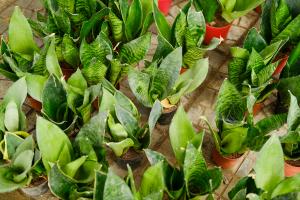How to Trim a Fig Tree Plant
Fig trees are a popular option for gardeners due to their delicious fruit and ability to thrive in many climates. However, in order to ensure healthy growth and bountiful harvests, it is important to regularly trim your fig tree plant. Below are some simple steps to help you properly trim your fig tree:
Step 1: Know When to Trim
The best time to prune your fig tree is during its dormant phase, which typically occurs during the winter. You’ll want to avoid pruning your fig tree during the spring or summer months when it is actively growing and producing fruit. However, if you notice any dead or diseased branches, they can be pruned at any time of the year.
Step 2: Remove Dead or Diseased Branches
The first step to trimming your fig tree is to remove any dead or diseased branches. These branches can hinder the growth and production of your tree by taking away resources from healthy branches. Use a clean and sharp pair of pruning shears to cut off any branches that you suspect are dead or diseased, making sure to cut at a slight angle just above a healthy bud.
Step 3: Thin Out Growth
Next, you’ll want to thin out the growth of your fig tree. Thinning helps to ensure that your tree is getting enough light and air circulation, which can improve overall health and production. Look for any branches that are crossing or rubbing against each other and prune them. You can also cut off any small or weak branches that are not contributing to the overall growth of the tree.
Step 4: Prune for Shape
Finally, you can prune your fig tree for its desired shape. This step is optional and can vary depending on your personal preference, but pruning for shape can help your tree look more aesthetically pleasing and can also improve its overall health. If you want a more compact and bushy tree, you can cut back any excessively long branches. Alternatively, if you want a taller and more open tree, you can cut off some of the lower branches. Just be sure to avoid cutting off too much foliage at once, as this can stress the tree and inhibit growth.
Conclusion
Trimming your fig tree plant doesn’t have to be a daunting task. By following these simple steps, you can ensure that your tree is healthy, well-maintained, and producing plenty of delicious fruit. Remember to prune during the dormant phase, remove dead or diseased branches, thin out growth, and prune for shape if desired. With a little effort and care, your fig tree can thrive for years to come!

 how many times do yo...
how many times do yo... how many planted tre...
how many planted tre... how many pine trees ...
how many pine trees ... how many pecan trees...
how many pecan trees... how many plants comp...
how many plants comp... how many plants can ...
how many plants can ... how many plants and ...
how many plants and ... how many pepper plan...
how many pepper plan...































